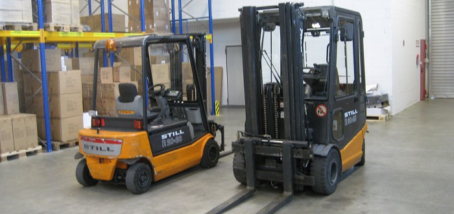-
ROSSLARE EUROPORT TARGETS HEALTH & SAFETY WITH CAMERA TELEMATICS PARTNERSHIP - 2 days ago
-
Landmark Study Reveals Wearable Robotics Significantly Boost Safety and Efficiency in Industrial Environments - July 24, 2024
-
Visku Tackle The Retail Seasonality Challenge One Pallet At A Time - July 22, 2024
-
KAMMAC AND BERGEN LOGISTICS STRENGTHEN FASHION & LIFESTYLE SERVICES IN THE UK - July 19, 2024
-
TENTBOX EXTENDS PARTNERSHIP WITH ARROWXL TO SUPPORT INCREASING DEMAND - July 17, 2024
-
The Perfume Shop improves customer journeys while driving profitability in partnership with Scurri - July 17, 2024
-
ZEROMISSION SECURES £2.3M ($3M) INVESTMENT TO ACCELERATE ELECTRIC FLEETS - July 16, 2024
-
BCMPA CELEBRATES SUCCESS OF 2024 CONFERENCE - July 15, 2024
-
Best of the Best: Jungheinrich Celebrates Triple International Award Win - July 12, 2024
-
GOPLASTICPALLETS.COM CALLS ON NEW CHANCELLOR RACHEL REEVES TO CONSIDER PLASTIC PACKAGING TAX REFORM - July 10, 2024
While attention is often given to fatal injury statistics in the workplace, non-fatal injuries are far higher in number and more costly from a financial perspective. To put this into context, an estimated 600,000 UK workers experienced a non-fatal injury during 2018/19, costing companies approximately £5.2 billion in the process.
Of course, these injuries occurred across a number of different industries, with some boasting a higher percentage rate of injury and subsequent lost revenues. Take the transportation and storage sector, for example, which has a higher risk level for employees and specific challenges relating to the nature of the work.
We will explore this further below, while asking how injuries are sustained in this sector and how the rate of instances compares with other industries.
Storage and Transportation – The Headline Numbers
In total, workers in the UK’s transportation and storage sector reported 29,000 non-fatal injuries during 2018/19.
This was in addition to 49,000 conditions pertaining to ill-health, 48% of which were recorded as musculoskeletal disorders.
If we break down the 29,000 non-fatal injuries, we can also see that 31% of these were the result of a slip, trip or fall. A further 26% were caused by lifting and carrying (often due to incorrect technique), while 11% occurred after an employee was struck by a moving or falling object.
Interestingly, the rate of self-reported non-fatal injuries in this industry has showcases a downward trend even since 2001/02, as employees have benefitted from improved working conditions and greater awareness of health and safety in the workplace.
However, the rate of non-fatal injuries remains disproportionately high in transportation and storage, with an estimated 2.4% of workers in this space having sustained a workplace injury.
Conversely, the national average across all industries was 1.9% in 2018/19, suggesting that companies with this sector (and particularly warehousing) need be increasingly vigilant when safeguarding the wellbeing of their employees.
In the case of warehousing, 3.1% of all employees have reported a non-fatal accident at work, and this makes sense given the increased likeliness of falls and lifting injuries in this type of environment.
The corresponding rate for post and courier employees is a whopping 3.5%, which is nearly double the national average and casts light on an area that needs to be addressed as a matter of urgency.
The Last Word
While these statistics may be alarming in some respects, they’re also incredibly insightful and provide clear targets for transportation and storage companies who want to improve their working conditions.
They also highlight the importance of mitigating the causes and consequences non-fatal workplace injuries, which is crucial in an age where employees are more aware of their rights than ever and can easily calculate a potential compensation pay out online.
Overall, there’s no doubt that employees who work in transportation and storage are statistically more likely to make an injury-related compensation claims than the average UK worker, particularly those employed by warehouses and courier firms.
Aside from the human cost, this can cause businesses to incur significant financial penalties, and it is far better to understand key health and safety challenges and make a proactive investment in safeguarding employees.

































